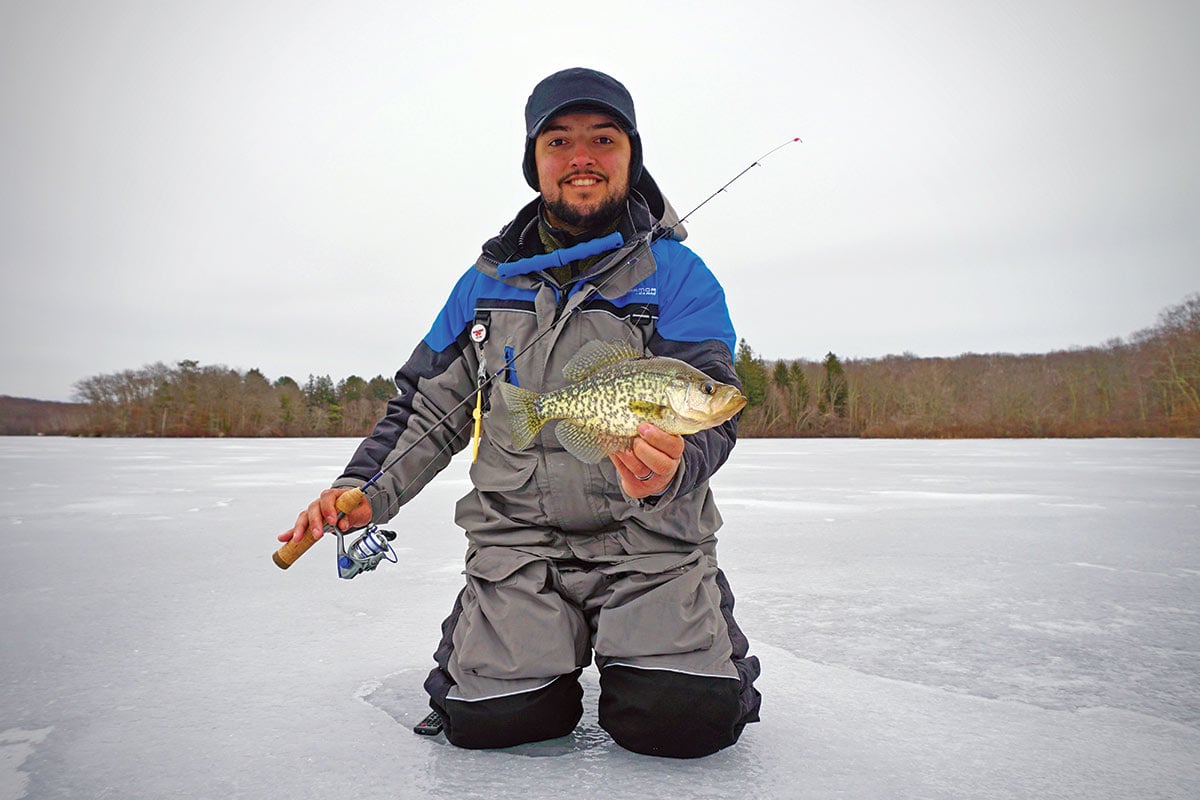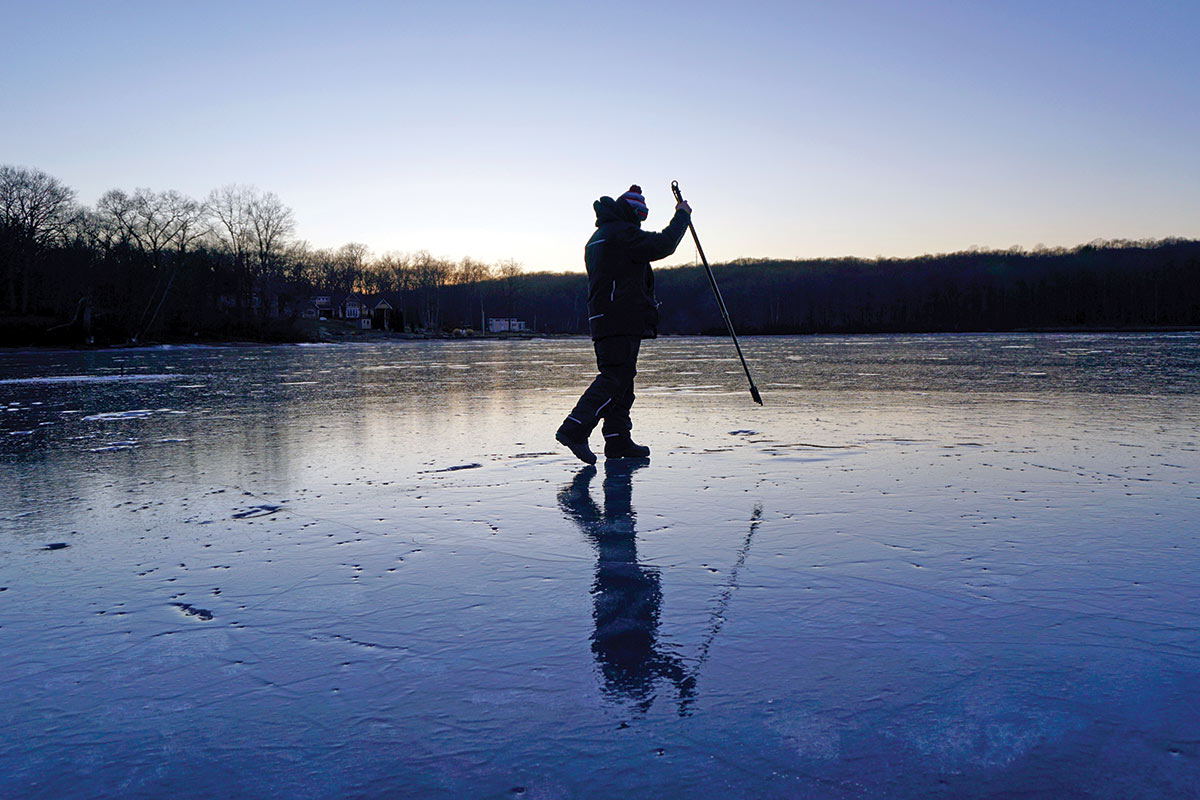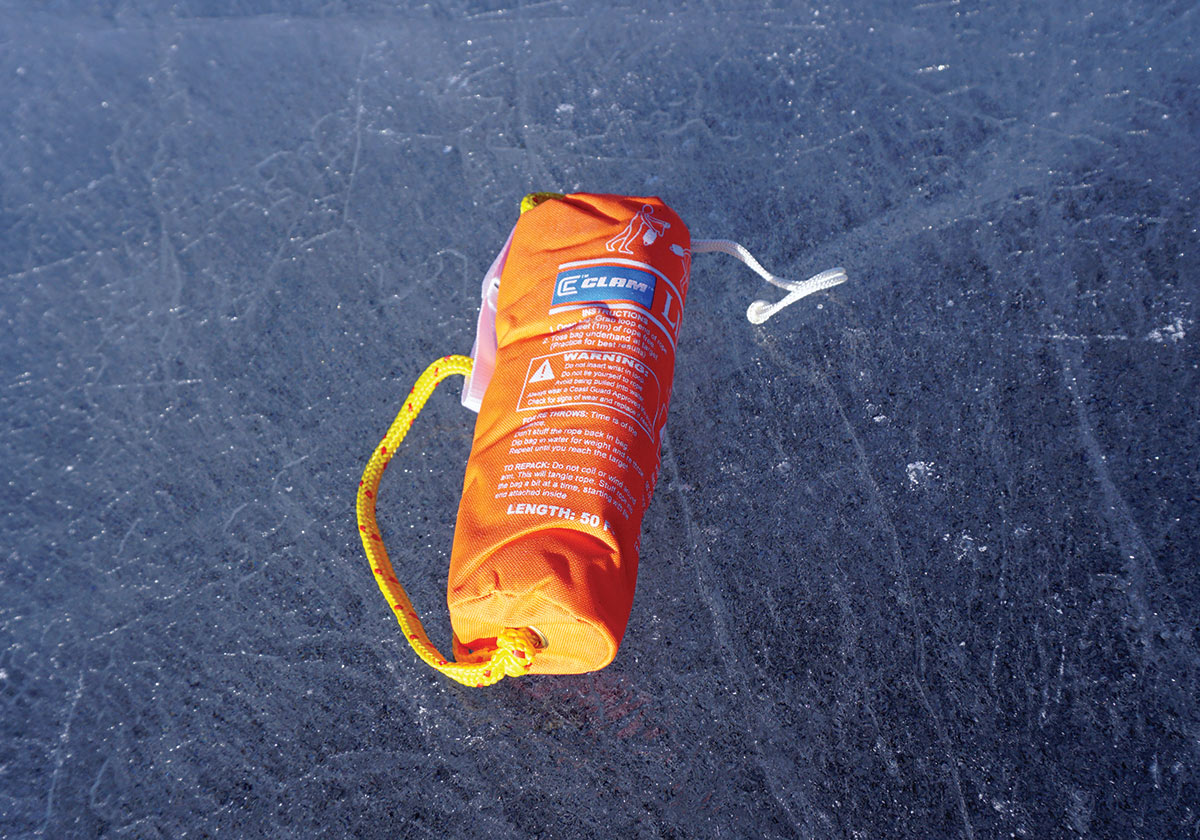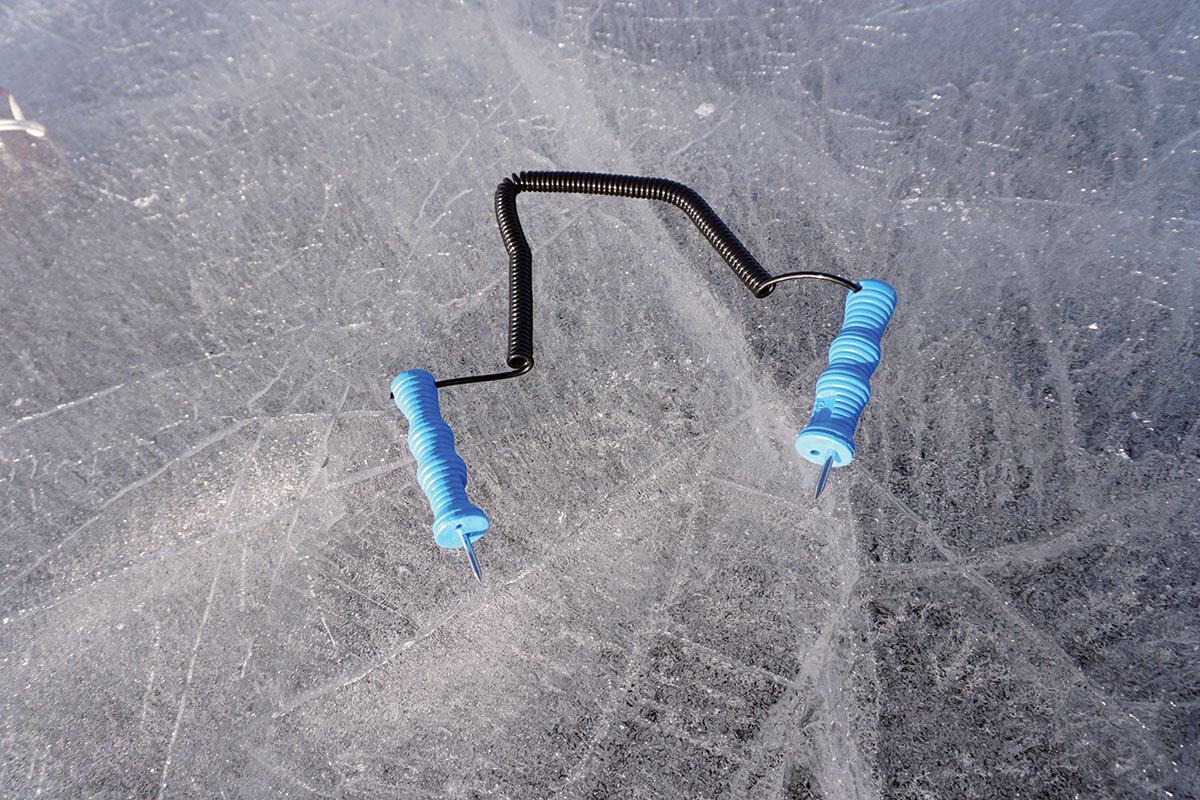
Begin this ice fishing season on the right foot with some basic precautionary measures.
Ice fishing has gained more popularity with fishing enthusiasts in recent years. It can be a fun winter activity, but it needs to be approached with safety and caution. Experienced ice anglers rely on many factors and variables to judge the “safeness” of the ice. By following some simple tips and safety guidelines you can greatly decrease your chances of having an accident while ice fishing this winter. But keep in mind, there is some inherent risk in trudging onto a frozen body of water with the intent of drilling holes through which your intended quarry will be pulled.

Pre-fishing Safety
Ice anglers all over the world tend to use four inches of new, clear ice as a baseline for when it is generally safe to venture onto the ice by foot. As you walk onto the ice, it is crucial to stop periodically and check the thickness of the ice since it can change dramatically from one spot to another. This process should be followed any and every time you set foot on the ice, regardless of how young or old the season. There are many factors that affect ice thickness including snow cover, currents running under the ice, rain, weather, and even factors such as waterfowl activity.
It is generally safe for vehicles such as ATVs and snowmobiles to venture onto the ice when six inches of solid, clear ice has formed. Once 10-plus inches has formed, it is considered generally safe for cars and small trucks to navigate on the ice. If you decide to operate a vehicle on the ice, it is important to drive slowly and to be aware of your surroundings as well as the ice beneath you.
It is often a good idea to check with your local bait and tackle shops before beginning your ice fishing trip. They may be able to provide you with some advice regarding where reliable ice has formed in your area. Although this information is extremely valuable as a starting point, it is important that you check conditions yourself as they can change rapidly. If unfamiliar with a given body of water, talk to the locals or those who spend a lot of time on a particular lake or pond, too. They may be able to advise you where thinner ice tends to form because of underwater currents or other lake-specific factors.
On-ice Safety
There are many pieces of safety equipment that can help you have both an enjoyable and safe time on the ice. Those first few steps onto a freshly-frozen lake can give any angler some angst; a Spud Bar is a simple tool that can help relieve those nerves as you venture onto the ice for the first time. A spud bar is a heavy cylinder with a sharp edge that ice anglers use to check the thickness of the ice with every step. As an angler makes his way onto the lake he strikes the ice with a spud bar ahead of each step to ensure the ice is still thick in front of him. It is important to know how much ice one strike with the Spud Bar will go through prior to venturing out. This will give you an idea of approximately how much ice to expect below your feet as you progress onto the lake. If your spud bar does in fact go through the ice, stop immediately and slowly walk back, following your original path, to the safety of the shore.

One of the simplest and most important pieces of safety equipment is your ice picks. These can save your life in the event that you fall through the ice. Ice is very difficult to climb onto once it breaks and you are treading water. Ice picks are worn around your neck and are easily accessible to you at all times. They have sharp spikes on them that help you grip the ice and pull yourself out in the event that you fall into the water. Just make sure that you can quickly and easily access your spikes. They’ll do you little good if you keep them tucked away in a coat pocket, or worse yet stashed in a bucket atop your ice sled.
A good quality ice suit can keep you both warm and safe on the ice. Advances in design over the years have resulted in suits that are buoyant and serve as flotation for you in the event that you fall into the water. Flotation, combined with the ability to keep you warm and dry, makes these suits important tools for ice anglers. Ice cleats, or creepers, help anglers to get around on slick ice. These creepers go over the outside of your boots or shoes and have cleats on the bottoms of them to help you grip the ice. Creepers are extremely important since ice isn’t forgiving and falling on it can result in serious injury. Having a sure grip is also very important when drilling your holes.

Picking the right clothing and knowing how to dress helps you to have a safer and more enjoyable time on the ice. Moisture-wicking base layers help to keep moisture away from your body, keeping you dry and warm. Wool is often a good choice for clothes as it does not absorb moisture and keeps you warm. It is also important to keep an extra pair of clothes and a safety blanket in your vehicle in the event that you fall in or get wet. Sunglasses are often overlooked in the winter time, but the glare of the sun off the ice or snow can be very harsh on your eyes.
A throw rope can make it easier for you or your fishing partner to save your life, in the event that either of you falls through the ice. The throw rope is constructed so that it can be easily thrown and caught. This is very important in an emergency, and like the spikes, the throw rope should always be kept in an easily-accessible location. Any tool that can potentially aid in saving your life cannot be overlooked or undervalued.
Ice fishing is a great individual sport, but is often much more enjoyable and safer when done in groups. It is important to tell someone where you will be, when you are going, and when you plan on returning if you decide to go out alone. Ice fishing can provide hours of outdoor fun during the winter, but it is important to take the necessary precautions to ensure a fun and safe time when heading onto the ice.




